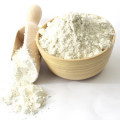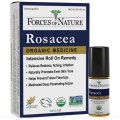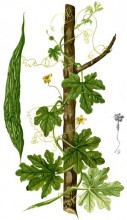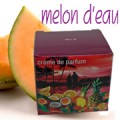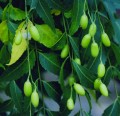 Loading... Please wait...
Loading... Please wait...- Home
- About Us
- Shipping, Returns & FAQ's
- Contact Us
-
For Your Information
- Canadian Customers Have a Choice if Shipping Via UPS
- Aura Cacia Homemade Aromatherapy Recipes
- Bella Nella Altered Art & Paper Crafts Blog
- Forms of Herbal Preparations
- Laundry Tips To Conserve Energy Blog from The Laundress
- The Story of Frontier Natural Products Co-Op
- Sovereign Silver Hydrosol and Aloe Protocol Stops Downward Spiral of Gut Dysbiosis
- Disclaimers
- Recommended Links
- RSS/Recent News
- The Story of Typhoon Housewares
- Reviews/Testimonials
- Raw Ingredients for Mfg
Bitter Melon Leaf (Momordica Charantia) Bulk
Product Description
Bitter Melon is reported to help in the treatment of diabetes and psoriasis. It has also been reported that Bitter Melon may help in the treatment of HIV.
Bitter Melon is the English name of Momordica charantia. Bitter Melon is also known by the names Karela and Bitter gourd. Bitter Melon grows in tropical areas, including parts of East Africa, Asia, the Caribbean, and South America, where it is used as a food as well as a medicine. It is a green cucumber shaped fruit with gourd-like bumps all over it. It looks like an ugly, light green cucumber. The fruit should be firm, like a cucumber. And it tastes very bitter. Although the seeds, leaves, and vines of Bitter Melon have all been used, the fruit is the safest and most prevalent part of the plant used medicinally. The leaves and fruit have both been used occasionally to make teas and beer, or to season soups in the Western world.
Does bitter melon have medicinal properties?*
Bitter Melon was traditionally used for a dazzling array of conditions by people in tropical regions. Numerous infections, cancer, leukemia, and diabetes are among the most common conditions it was believed to improve. Bitter Melon is reported to help in the treatment of diabetes and psoriasis. It has also been thought that Bitter Melon may help in the treatment of HIV, but the evidence thus far is too weak to even consider. The ripe fruit of Bitter Melon has been suggested to exhibit some remarkable anti-cancer effects, but there is absolutely no evidence that it can treat cancer. However, preliminary studies do appear to confirm that Bitter Melon may improve blood sugar control in people with adult-onset (type 2) diabetes.
Is it true that bitter melon capsules are effective in lowering blood sugar of diabetics?
The blood lowering action of the fresh juice of the unripe Bitter Melon has been confirmed in scientific studies in animals and humans. At least three different groups of constituents in Bitter Melon have been reported to have hypoglycemic (blood sugar lowering) or other actions of potential benefit in diabetes mellitus. These include a mixture of steroidal saponins known as charantin, insulin-like peptides, and alkaloids. It is still unclear which of these is most effective or if all three work together. Nonetheless, Bitter Melon preparations have been shown to significantly improve glucose tolerance without increasing blood insulin levels, and to improve fasting blood glucose levels.
Rich in iron, bitter melon has twice the beta carotene of broccoli, twice the calcium of spinach, twice the potassium of bananas, and contains vitamins C and B 1 to 3, phosphorus and good dietary fiber. It is believed to be good for the liver and has been proven by western scientists to contain insulin, act as an anti-tumor agent, and inhibit HIV-1 infection.
At least 32 active constituents have been identified in bitter melon so far, including beta-sitosterol-d-glucoside, citrulline, GABA, lutein, lycopene and zeaxanthin. Nutritional analysis reveals that bitter melon is also rich in potassium, calcium, iron, beta-carotene, vitamins B1, B2, B3 and C.
Even more effective than a conventional drug in lowering blood sugar!
Recently, the Department of Health in the Philippines has recommended bitter melon as one of the best herbal medicines for diabetic management. And multiple clinical studies have clearly established the role of bitter melon in people with diabetes. Scientists have now identified three groups of constituents that are thought to be responsible for its 'blood sugar lowering' action.
One of these, a compound called charantin, which is composed of mixed steroids, was found to be more effective than the oral hypoglycaemic drug, tolbutamide, in reducing blood sugar.
Another, an insulin-like polypeptide, called polypeptide P, appears to lower blood sugar in type I (insulin dependent) diabetics, while alkaloids present in the fruit have also been noted to have a blood sugar lowering effect. As yet, researchers are unclear as to which of these compounds is most effective or if it is the synergistic effect of all three. Further research is required to understand how these compounds actually work.
Compounds known as oleanolic acid glycosides have been found to improve glucose tolerance in Type II (maturity onset) diabetics by preventing the absorption of sugar from the intestines. Bitter melon has also been reported to increase the number of beta cells (cells that secrete insulin) in the pancreas, thereby improving your body's capability to produce insulin (insulin promotes the uptake of sugar from your blood by cells and tissues).
Evidence
A two-day Indian study published in 1999 examined bitter melon's effect on 100 people with type 2 diabetes. On both days, researchers tested the participants' blood sugar levels in a fasting state and after drinking glucose. Participants took 150 to 200 mi of bitter melon extract on the second day. That day, researchers found that 86 percent of the participants experienced an average 14 percent drop in blood sugar after fasting and after drinking glucose.
Precautions: In moderation, bitter melon powder is safe for most people. However, large doses or long-term use may cause nausea and diarrhea. You should avoid this herb if you take insulin or diabetes medications, Compounds in bitter melon are known to increase the concentration and toxicity of P-gp substrate drugs and inhibit the metabolism of CYP450 substrate drugs. Check with your physician before using this herb if you are pregnant or nursing, or if you have a chronic disorder or take medications.
Botanical Name: Momordica charantia
aka: bitter gourd or bitter squash, karela, karavella, goya
Origin: India
Notes: Kosher Certified. Non-irradiated
Specifications are subject to change without notice.
* FDA Disclaimer
Read More About It
Herbal Remedies: A Quick and Easy Guide to Common Disorders and Their HerbalRemedies Paperback by Asa Hershoff
Lessons from The Miracle Doctors: A Step-by-Step Guide to Optimum Health and Relief from Catastrophic Illness by Jon Barron
Botanical Medicine for Women's Health, 1ed by Aviva Romm
You Recently Viewed...
Currency Converter
Choose a currency below to display product prices in the selected currency.




